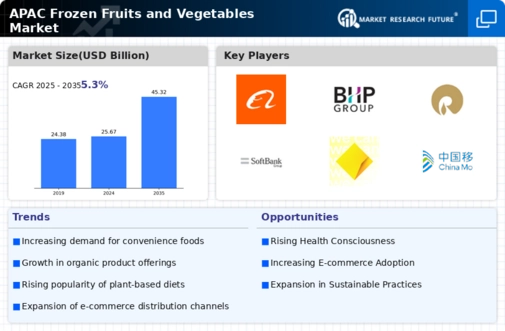Market Analysis
In-depth Analysis of APAC Frozen Fruits Vegetables Market Industry Landscape
One of the factors driving growth in the frozen fruits and vegetable market is increasing knowledge among consumers about the health benefits of eating these foods in APAC region. Generally, these food items are flash-frozen soon after being harvested such that all vital nutrients are retained within while storage does not lead to nutrient loss. Therefore, they represent an excellent option for busy people who do not have time for cooking but still need a balanced diet rich on vitamins.
Besides that, changing preferences among consumers towards convenience and timeliness have also played part into expansion of APAC’s frozen fruits & vegetables market. With hectic schedules becoming common in many Asian countries (e.g. China), consumers require quick meal solutions because they hardly spend much time preparing food at home anymore. Busy individuals/families preferring healthy meals make use of this category’s products especially since they can prepare them without any hassle.
The APAC frozen fruit and vegetables market is growing and innovating rapidly due to advancements in food processing and freezing technologies. These include flash freezing (quick freezing) and individual quick freezing (IQF) which preserve the fruit and vegetable texture, taste, nutrient levels among other qualities. This guarantees that customers will always be provided with high quality fruits or veggies. Packaging technology improvements like vacuum sealed packets as well as resealable pouches are crucial for enhanced product freshness in stored produce. Competition for market share among many players through various products differentiation, branding techniques is fierce in APAC’s frozen fruits and vegetables sector. The key actors consist of multinational food firms to local and regional suppliers of frozen goods. In addition, brand reputation, product quality and price competitiveness play vital roles in shaping consumer purchase decisions. Furthermore, strategic alliances with vendors, food service companies as well as distributors are needed for increased brand visibility alongside more penetration into the market.

















Leave a Comment